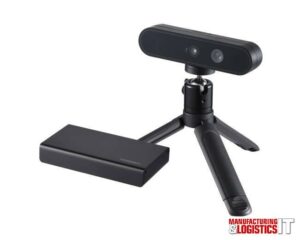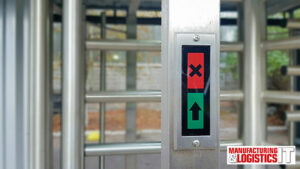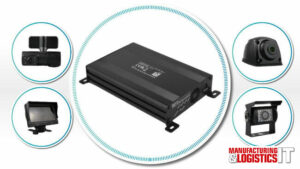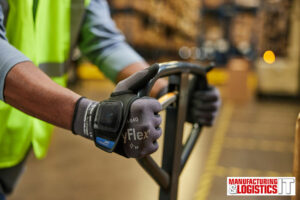By Raymond Cheng, Managing Director, WayKen Rapid Manufacturing Ltd.
Automotive lighting prototyping is an essential aspect of creating the right aesthetics of an automotive vehicle. Lights need to be functional but lighting prototypes also aid with the general design and aerodynamics of the vehicle.
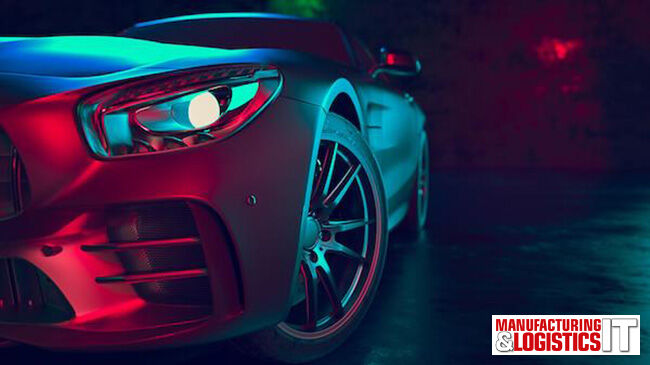
The production of these prototypes has been made easier over recent years with the use of CNC milling machines and even 3D printing. CNC prototype machines provide the ability to provide three, four and five axis fabrication giving a far more detailed quality to the prototype.
When we think about automotive lighting, we’re obviously not just referring to the headlamps but also to internal and dashboard lights, turn signals, fog lamps etc. so the design parameters are varied. Let’s then take a closer look at the processes of getting a design to the prototype stage.
Design
The headlamps of a vehicle are often one of the first things a potential buyer is drawn to so the design of an external automotive light needs to fit the remit of having great aesthetics that fit the overall feel of the vehicle. This is also essential to maintaining the aerodynamics of the vehicle while also being able to act as a functional light. Internally, the design again needs to be aesthetically pleasing but accessible and easily visible for the driver.
Another important factor is the need to comply with safety regulations and this will vary from country to country. Then there’s the cost and material use which also needs consideration.
The key aspect of the design though is the marriage between clear and opaque materials which needs to be seamless. In a household light for instance this definition can be visible but for automotive lighting, the lines should not be seen. Therefore, the prototyping process needs to be able to make this transition seamlessly.
Prototyping
Prototyping is something that can be done “in house” but is now often undertaken by external specialist providers. Such providers will have the knowledge and machining capabilities to make quality prototypes precisely from the original design. The use of 3D printing technology though is making the prototyping process much easier. Companies such as Audi are increasingly using this technology in their prototyping as it both cuts costs and time.
The most important aspect of any light is the transparency of the lens so it’s necessary to machine clear plastic parts without blemishes or imperfections. However, in automotive lighting the use of over molding is also an important factor. Some automotive lights, such as the tail lights in the image, will need to incorporate different colors and textures in layers so over molding in the prototype allows for this.
Prototyping Services
As we’ve said, prototyping can be done by the designers and manufacturers but he inherent cost of having a CNC milling machine on board is then a major consideration for manufacturers. However, outsourcing the prototyping to a professional prototyping service may be the way to go for a high-quality item that you can take to market.
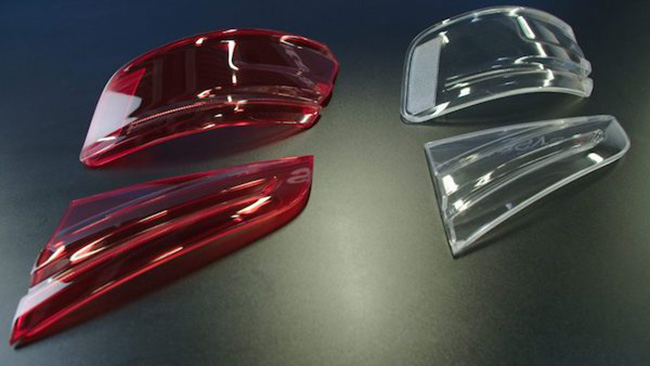
These services will have the latest CNC technology at their disposal so there’s no limit to what they can produce and will work closely with the designer to get the desired results.
Materials
So, we’ve had a general overview of automotive lighting prototyping but now let’s get down to some of the more technical aspects of the process.
There are five main types of material used in the manufacture of automotive lighting (excluding the bulb) and these will undoubtedly be familiar:
- Polypropylene (PP)
- Acrylonitrile Butadiene Styrene (ABS)
- Polyethylene (PE)
- Polyoxymethylene (PE)
- Polycarbonate (PC)
We won’t go into exact details about the chemical makeup of these materials but each of these has its own particular properties that lend themselves to use in automotive lighting. For instance, strength, durability and chemical resistance are all requirements of an automotive lighting system as well as resistance to UV degradation. These materials are also easy to fabricate and relatively cheap to use so highly beneficial for the vehicle manufacturer.
Prototyping Methods
We’ve mentioned two main types of prototype manufacture, both of which have similar properties, so let’s look at each of these individually.
1. CNC Milling
The use of CNC milling to produce any prototype will give you a detailed and high precision result. The key component is the use of multiple axis technology which will allow the machine to make far more intricate designs.
As it’s a milling process, this means that there is a fair amount of waste material produced as the cutter needs to shape the block of material. This may be a consideration for the future manufacture of the finished item, but shouldn’t be a worry at the prototyping stage.
As we’ve said, the best CNC mill for automotive lighting prototypes would need to be a multiple axis machine and these typically will have five axes. However, there may be the need to expand on this if the shape and construct of the lens for instance is more complex. This would then lend itself to using a prototyping service as previously mentioned where the cost of having your own machine will probably outweigh the need.
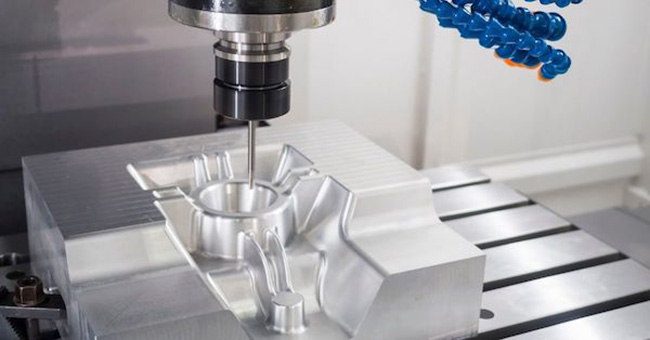
2. 3D Printing
3D printing has taken a massive leap forward in the last few years and is used both in manufacturing and home environments. Obviously, when it comes to prototyping at this level, we’re not talking about the basic 3D printer that a hobbyist might use but something that can produce more detail and quality every time.
There are two main types of 3D printing, FDM and SLA (resin) and a combination of the two may be the way to go with prototyping. For instance, an FDM printer uses plastic filament so would be better suited to the lighting component housing made from ABS. An SLA printer will be more adept at producing the fine detail that may be needed for the lens or the smaller components of internal lighting.
However, this method is definitely less accurate overall than CNC milling so would possibly only be of use in the early stages of the prototype.
Conclusion
Automotive lighting prototyping is an essential part in the process of getting a quality and aesthetically pleasing vehicle to the production stage and then to market. Technological advances have made this process much easier with the use of high precision CNC milling and even 3D printing. This has meant that vehicle manufacturers can see their designs come to life and easily assess the functionality and aesthetics of the lighting system.
So, it seems there’s a bright future for automotive lighting prototypes.
- SEO Powered Content & PR Distribution. Get Amplified Today.
- Platoblockchain. Web3 Metaverse Intelligence. Knowledge Amplified. Access Here.
- Source: https://www.logisticsit.com/articles/2023/03/21/the-design-and-prototype-manufacturing-of-automotive-lighting
- :is
- 1
- 3d
- 3D Printing
- a
- ability
- Able
- About
- ABS
- accessible
- accurate
- Act
- advances
- Aid
- All
- allows
- amount
- and
- ARE
- AS
- aspect
- aspects
- At
- audi
- automotive
- AXES
- Axis
- basic
- BE
- being
- beneficial
- BEST
- Better
- between
- Block
- board
- Bright
- by
- CAN
- capabilities
- cheap
- chemical
- Cheng
- clear
- closely
- closer
- combination
- come
- Companies
- complex
- component
- components
- consideration
- construct
- Cost
- Costs
- country
- Creating
- cuts
- dashboard
- definitely
- Design
- Designer
- designers
- designs
- detail
- detailed
- details
- different
- Director
- down
- drawn
- driver
- durability
- each
- Early
- easier
- easily
- environments
- essential
- etc
- Even
- Every
- excluding
- Expand
- external
- fair
- familiar
- few
- fine
- First
- fit
- Fog
- For
- Forward
- from
- functional
- functionality
- future
- General
- get
- getting
- Give
- Giving
- Go
- great
- Have
- having
- High
- high-quality
- highly
- Home
- household
- housing
- However
- HTTPS
- image
- important
- important aspect
- in
- incorporate
- increasingly
- Individually
- inherent
- instance
- internal
- internally
- IT
- ITS
- itself
- jpg
- Key
- knowledge
- Last
- latest
- layers
- Leap
- LEND
- Lens
- Level
- Life
- light
- Lighting
- LIMIT
- lines
- Look
- Ltd
- machine
- Machines
- made
- Main
- major
- make
- makeup
- Making
- managing
- Managing Director
- Manufacturer
- Manufacturers
- manufacturing
- Market
- massive
- material
- materials
- means
- mentioned
- method
- might
- more
- most
- multiple
- necessary
- Need
- needed
- needs
- of
- on
- ONE
- original
- Outsourcing
- overall
- overview
- own
- P&E
- parameters
- part
- particular
- parts
- PC
- plastic
- plato
- Plato Data Intelligence
- PlatoData
- potential
- precisely
- Precision
- previously
- probably
- process
- processes
- produce
- Produced
- Production
- professional
- properties
- prototype
- prototypes
- prototyping
- provide
- providers
- quality
- rapid
- recent
- regulations
- relatively
- Requirements
- Resin
- Resistance
- result
- Results
- Safety
- Said
- seamless
- seamlessly
- seems
- service
- Services
- Shape
- should
- signals
- similar
- smaller
- So
- some
- something
- specialist
- Stage
- stages
- strength
- such
- system
- Take
- talking
- Technical
- technological
- Technology
- that
- The
- The Block
- The Future
- their
- themselves
- therefore
- These
- things
- three
- time
- to
- transition
- Transparency
- TURN
- types
- typically
- undoubtedly
- use
- vehicle
- visible
- Waste
- Way..
- WELL
- What
- which
- while
- will
- with
- without
- Work
- would
- years
- Your
- zephyrnet

